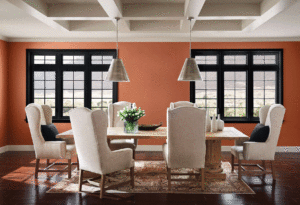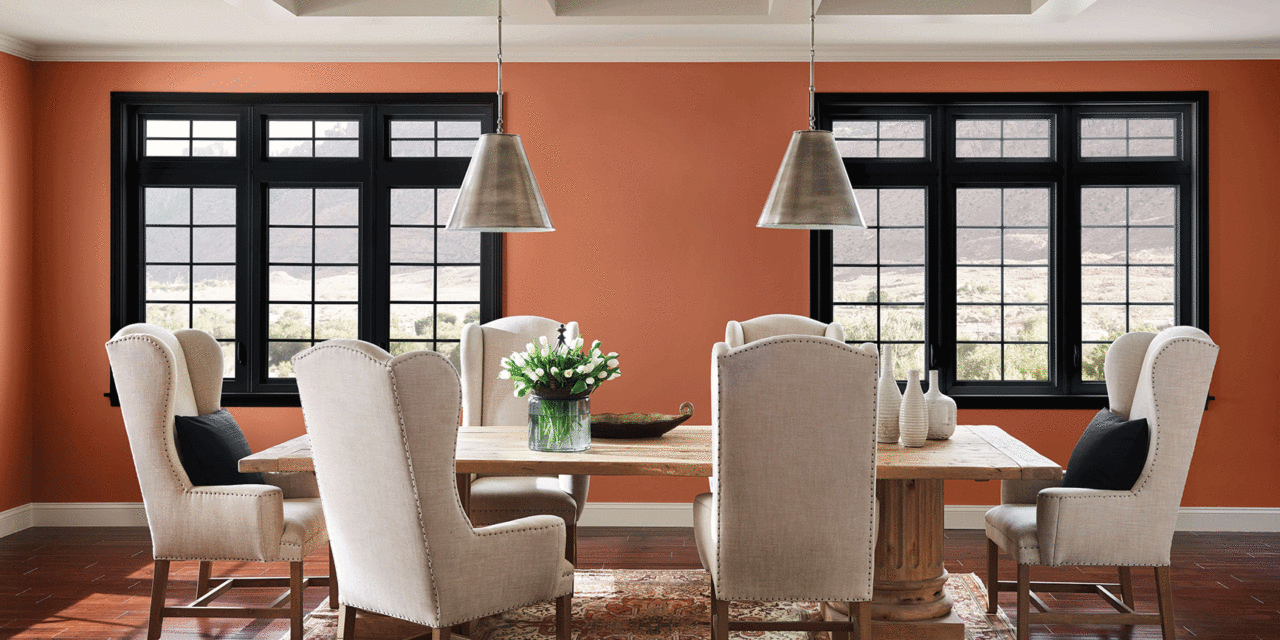
“Cavern Clay” is a warm earthy tone. This hue teams well with terra cotta and adobe, and the shade blends well with light woods, Aztec prints and cacti. (Photo courtesy Sherwin Williams)
Are you looking to escape the pressure and stress of today’s society?
Spas offer a temporary respite from the chaos.
For a consistent, long-term solution, create a comforting, healing, secure environment at home.
Begin with color. In prior years, design gurus selected a “color” for the year.
An atypical change happens this year.
The major paint manufacturers have selected a variety of new shades from soothing neutral hues to bold, vibrant shades.
The theme is personal reflection, change, tranquility and healing.
Benjamin Moore showcases “Metropolitan” a warm gray/tan neutral hue. It is soothing and provides peace and tranquility.
“Metropolitan AF-690 emanates nuance, harmony and extravagant ease,” says Ellen O’Neill, Benjamin Moore & Co. director of strategic design intelligence. “Always adaptable, it softens to matte or shimmers with sheen.
It’s neutral. It’s understated. It just is. This is color, off-duty.”
Use in a kitchen or living room mixed with neutral colors, pinks and blues.
Behr’s “Blueprint” is a chalky, blue hue influenced by the architectural design papers inspiring those who want to reinvent themselves.
This shade blends well with earth tones, jewel tones and pastels in any room of the home.
Pittsburgh Paint’s “Night Watch” is part of the blue green aqua hues that get their inspiration from lakes and oceans. This naturally calming shade also has the healing power of nature. The calming tone works well in a bedroom, office or bathroom.
Sherwin Williams’ “Cavern Clay” is a warm earthy tone. This hue teams well with terra cotta and adobe.
The shade blends well with light woods, Aztec prints and cacti. This is reminiscent of the adobe homes built in the southwest for protection and comfort.
It works well in any room.
From Ace Hardware, Clark & Kensington’s “Pineapple Cream Granita” is a yellow hue mixed and named by a consumer. This soothing color would be fit in any room bringing tranquil serenity.
Move the outdoors inside by creating a private sanctuary with the use of houseplants. Use houseplants as a design element creating a focal point in a room, leading the eye to a space.
Use repetition, contrast, framing vines, lend texture, color and form to private indoor space. This works in a section of a room such as a small space in the kitchen or family room, or an entire room like an office or study.
Move the inside outside to create a uniform sanctuary. While the use of color hues brings the beauty and tranquility of nature into the home there’s a sustained trend to expand the home outside. Small multipurpose gardens are popular as is container gardening or a combination of both. Use colors, structures and textures to complement the natural colors outside. The slow growing Japanese maple is a good example of this mixed media garden. It works well as a container and provides seasonal colors, design texture and form for the garden. Use a design element pot instead of the traditional single color or terra cotta.
Traditionally, a patio or deck is used as an outside living space. With the focus on creating a soothing, safe and healing environment these living spaces are moved out into the lawn. Move dining off of decks and into the garden for a more dramatic and serene experience. Use flooring, lighting and furniture for the outdoor rooms.
In terms of color around the garden, mint colors are making a comeback, according to Garden Media Group’s 2019 trends report.
The oxygenating, fresh tone of mint harmonized science and technology with plant life and nature, the report says. Another forecaster, WGSN, projected “neo mint” will dominate interiors in 2020.
Deciduous shrubs or trees with colorful or peeling bark add texture and contrast.
Pick evergreens that change color in winter.
Plant early bloomers that bring late winter flowers.
Contrast dark branches with bright green conifers.
Select colors, textures and fragrances to enhance the healing experience of nature.
Remember the out of doors has many habitat homes for wildlife; birds, turtles, frogs, bees and butterflies. Use natural plantings and shrubs to manage pesky pests.
Plant both seed producing and berry bearing plants.
Add a small food garden and grow unusual edibles:
Cucumbers, chickpeas, edamane, sweet potato leaves, bee-friendly flower crops, melons and squash.
The leaves and textures add variety, they are easy to grow and you will have the reward of fresh food.
For fragrances and beauty plant Sweet Alyssum, zinnias, cosmos, nasturtiums, and calendula flowers.
Local garden clubs or established institutions such as Longwood Gardens can be sources of inspiration.





